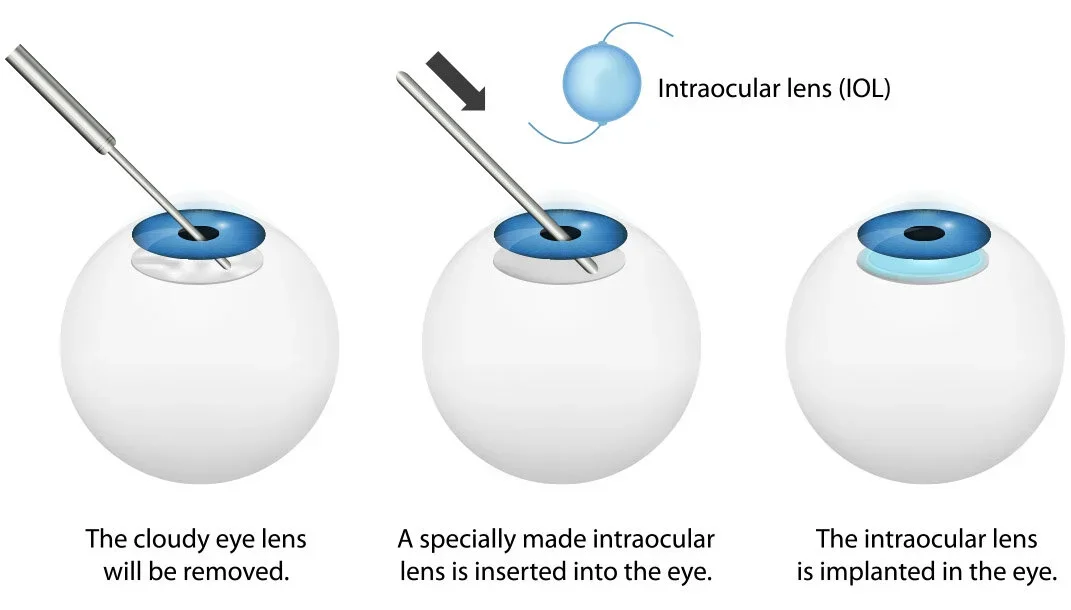Your Complete Guide to Intraocular Lenses
Intraocular lenses are an important option for people experiencing cloudy vision or needing stronger glasses as they age. This guide explains what intraocular lenses are, why they matter, and how they can help restore clear sight. If you’re thinking about cataract surgery or want to know how these lenses work, you’ll find all the details here in simple terms, along with what to expect at Springwood Eye Clinic.
What Are Intraocular Lenses?
Intraocular lenses are artificial lenses put inside your eye during surgery to replace your natural lens when it becomes cloudy. This cloudiness typically occurs with cataracts. These new lenses help restore clear vision, and most of the time, the surgery is done as a day procedure.
Why Intraocular Lenses Are Important
Cataracts can cause your vision to become cloudy, colours may look faded, and simple tasks like reading, driving, or even seeing faces can get much harder. You might notice you struggle more in low light or that you need extra lighting just to manage regular activities. This is where intraocular lenses make a big difference. By replacing your eye’s cloudy lens with a type of lens that is suited to you, intraocular lenses can help bring back sharper, brighter vision. Many people find that daily routines become easier, and they can enjoy hobbies and social time again without as much worry. Intraocular lenses can also lower your need for glasses or contacts, making your sight feel more natural and less of a daily struggle, providing a steady, lasting solution for those who are affected by cataracts.
Types of Intraocular Lenses
Your eye specialist will help you choose the right lens for your needs:
Monofocal Lenses
Monofocal lenses are set for one distance, usually for seeing things far away. Reading glasses are still needed for close-up tasks.
Multifocal Lenses and Trifocal Lenses
These lenses allow you to have a wider range of vision so that you may use glasses less often. Some people can notice glare or halos, especially when driving at night.
Toric Lenses
Toric intraocular lenses are made for people with astigmatism. These lenses help to make your vision sharper if you have an uneven cornea.
Extended Depth of Focus Lenses
These lenses are designed to provide a good range of clear vision for tasks such as using a computer or shopping. Glasses may still be helpful with very small print.
Intraocular Lens Implant Surgery
During cataract surgery, you will be under general anesthesia, and the old, cloudy lens is gently taken out and replaced with a new intraocular lens implant. The surgery typically takes about 30 minutes per eye. This new lens stays in place and cannot be seen or felt. The materials used are safe and long-lasting.
Benefits of Intraocular Lens Implants
Sharper, clearer vision
Less need for glasses
Permanent fix for cataracts
It can help correct astigmatism or short-sightedness.
How Safe Are Intraocular Lenses?
Intraocular lens implants have been used safely for many years. Most people in Australia who have cataract surgery experience no major issues. If you have any concerns, you can discuss them with your eye surgeon before having the surgery.
What Happens on the Day of Surgery
The procedure takes less than an hour.
Your surgeon will provide a local or general anaesthetic.
You can go home the same day.
Vision usually becomes clearer over the next few days.
Eye drops help your eye heal.
Who Can Have Intraocular Lenses?
Anyone with cataracts or those who want to reduce their reliance on glasses may be potential candidates for intraocular lenses. Your suitability is checked by your eye specialist.
Frequently Asked Questions: Intraocular Lenses and Implants
Are intraocular lenses permanent?
Yes, these lenses are structured so that they can last a lifetime.
Will I still need glasses after surgery?
Many people still use glasses for some tasks, especially for reading or close-up work.
What are intraocular lenses made from?
Intraocular lenses are made from safe plastics, such as acrylic or silicone.
Can I have surgery on both eyes at once?
Usually, only one eye is done at a time. The second eye is typically only able to be treated after the first has healed.
Can I feel the intraocular lens once it is in my eye?
No, you cannot feel or see the lens once it is in place.
Will intraocular lenses last forever?
Yes, they are designed to last for your whole life.
Do intraocular lens implants correct astigmatism?
Yes, toric implants are made to correct astigmatism.
Are there any side effects?
Some people notice glare or halos at night. This can depend on which lens is used.
Who can help me pick the right lens?
Speak to your Ophthalmologist or the team at Springwood Eye Clinic for personal advice.
Intraocular lenses are a proven way to bring back clearer vision and make daily life easier. For more help or information about intraocular lenses, contact Springwood Eye Clinic.


